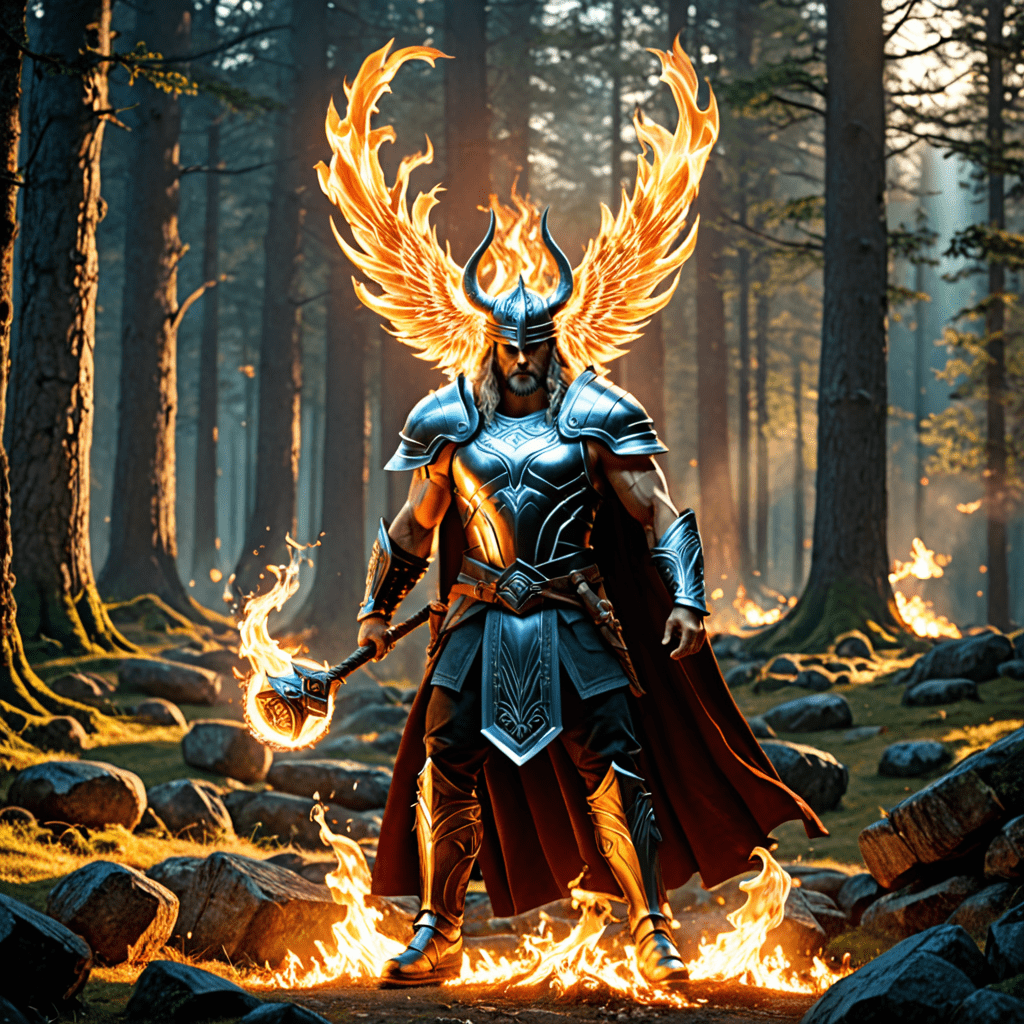The Symbolism of Light and Fire in Norse Mythology
Understanding Light and Fire in Norse Mythology
In Norse mythology, light and fire hold significant symbolic meanings. Light represents knowledge, enlightenment, and purity, while fire embodies warmth, transformation, and destruction. Elevated to the status of divine symbols, these elements are interwoven into the tapestry of Norse beliefs, shaping myths, gods, and cosmology.
Sun and Moon: Beacons of Light
The sun, personified by the goddess Sól, and the moon, embodied by the god Máni, hold pivotal roles in Norse mythology. Sól’s chariot, pulled by divine horses, traverses the sky, illuminating the world with her radiant glow, symbolizing order, clarity, and life. Máni, the moon, guides the night and is believed to have powers over the passage of time. Together, the sun and moon represent balance and cyclical nature, illuminating both physical and spiritual realms.
The Sacred Fire of Creation and Destruction
Fire, embodied by the giant Surt, is both a creative and destructive force in Norse mythology. Surt guards the realm of Muspelheim, a realm of fire and heat. Fire represents passion, inspiration, and vitality, but also signifies chaos and ruin when unbridled. The eternal fire from Muspelheim is instrumental in the creation and eventual end of the world, Ragnarök, highlighting the dual nature of fire’s symbolism in Norse beliefs.
Light, Fire, and the Human Experience
In Norse mythology, the symbolism of light and fire extends beyond the divine realm to the human experience. Warriors sought the sun’s blessing before battle, believing in its protective power and guidance. The hearth, the sacred center of the home, embodied the essence of fire as warmth, nourishment, and community. Understanding and harnessing the symbolism of light and fire was central to Norse cultural and spiritual practices, shaping their worldview and everyday lives.
In conclusion, light and fire in Norse mythology embody a profound duality of meanings, representing both creation and destruction, illumination and transformation. Understanding the symbolic significance of these elements enriches our comprehension of Norse beliefs, values, and narrative traditions.
FAQ: The Symbolism of Light and Fire in Norse Mythology
What role does light play in Norse mythology?
In Norse mythology, light symbolizes knowledge, enlightenment, and order. It is associated with gods like Baldr, who embodies purity and beauty, often represented by light. Light also signifies the power of divine wisdom and protection in Norse beliefs.
How is fire symbolized in Norse mythology?
Fire holds a significant symbolic value in Norse mythology, representing transformation, destruction, and rebirth. The god of fire, Surtr, is a prime example, embodying chaos and ultimate destruction through fire, signifying the cyclical nature of creation and destruction in Norse cosmology.
What importance do light and fire hold in Norse rituals and ceremonies?
Light and fire are integral elements in Norse rituals and ceremonies, symbolizing purification, protection, and connection with the divine. The act of kindling fires or carrying torches during ceremonies is believed to ward off malevolent forces and invite blessings from the gods, enhancing the sacredness of the ritual.




